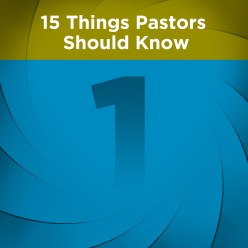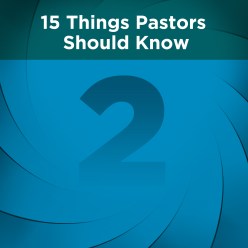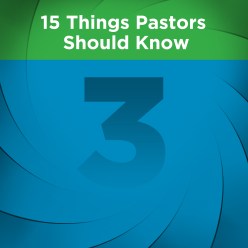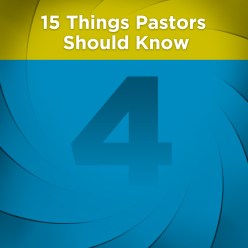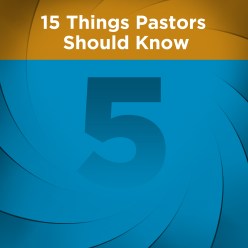Editor’s Note: After this article published, the US Small Business Administration issued the application and instructions for Paycheck Protection Program (PPP) loan forgiveness. On May 22, 2020, the SBA issued two new Interim Final Rules (IFR) (the Loan Forgiveness IFR and the Review Process IFR). Tax attorney and CPA Ted Batson’s updated article addresses the developments associated with these IFRs. Additionally, in early June, Congress nearly unanimously passed the Paycheck Protection Program Flexibility Act, and on June 5, 2020, President Trump signed it into law. The legislation modifies several key provisions of the CARES Act. Batson wrote a new article further detailing these developments as well. Readers are strongly encouraged to read through these additional updates to ensure they have the most current information available.
Additionally, Congress passed another bill—which President Trump signed on July 4, 2020—that extends the deadline for PPP loan applications to August 8, 2020. Unfortunately, it’s not yet clear what the new application deadline means for the various dates and deadlines associated with the program, but future guidance from the Treasury Department and SBA should shed light on any changes resulting from the extension.
Richard Hammar answers the following questions submitted to Church Law & Tax about the Paycheck Protection Program (PPP).
Determining eligibility
Are churches eligible to participate in the Paycheck Protection Program (PPP)?
Yes, so long as they have less than 500 employees. The US Small Business Administration (SBA) has issued a document titled Frequently Asked Questions Regarding Participation of Faith-Based Organizations in the Paycheck Protection Program (herein “Faith-Based Organizations FAQ”) explicitly affirming this point. This document also clarifies
that faith-based organizations are eligible to receive SBA loans regardless of whether they provide secular social services. That is, no otherwise eligible organization will be disqualified from receiving a loan because of the religious nature, religious identity, or religious speech of the organization. The requirements in certain SBA regulations . . . impermissibly exclude some religious entities. Because those regulations bar the participation of a class of potential recipients based solely on their religious status, SBA will decline to enforce these subsections and will propose amendments to conform those regulations to the Constitution.
For more on the availability of the PPP to churches, see Churches and Faith-Based Organizations May Apply for CARES Act Loans and SBA Updated Guidance: Religious Liberty Protections Will be Provided with Loan Program.
Does church participation violate the First Amendment of the United States Constitution which prohibits the establishment religion?
It is likely that the eligibility of churches and other religious organizations to participate in the loan program will be challenged in court as an unconstitutional establishment of religion in violation of the First Amendment. But consider three important points:
1. Any legal challenge will be hampered by the fact that this program ends on December 31, 2020.
2. The United States Supreme Court has ruled that laws benefiting a wide range of secular nonprofit organizations are not rendered unconstitutional by the fact that religious organizations are included among the beneficiaries.
To illustrate, in 1970 the Court upheld the constitutionality of a New York law exempting churches from property taxes, in part because property used for religious purposes was but one of a wide variety of classifications of property that were exempted from tax. The state had not singled out churchowned property for the exemption, but rather it had included such property in a long list of other exempted properties owned by organizations whose activities the state had decided were socially desirable and deserving of protection through exemption from tax. Walz v. Tax Commission, 393 U.S. 664 (1970).
Similarly, in 1989 the United States Supreme Court ruled that a Texas law exempting religious periodicals from state sales tax violated the First Amendment’s nonestablishment of religion clause. Texas Monthly, Inc. v. Bullock, 109 S. Ct. 890 (1989). From 1984 until 1987 Texas law imposed a sales tax upon all periodicals except those “published or distributed by a religious faith and that consisted wholly of writings sacred to a religious faith.” This law was challenged by a secular publisher, and the United States Supreme Court agreed that the Texas law violated the First Amendment’s ban on the establishment of religion.
But the Court stressed that “insofar as a tax exemption is conferred upon a wide array of nonsectarian groups as well as religious organizations in pursuit of some legitimate secular end, the fact that religious groups benefit incidentally does not [violate the First Amendment].” The court emphasized that if Texas chose to grant a tax exemption to “all groups that contributed to the community’s cultural, intellectual, and moral betterment, then the exemption for religious publications could be retained.” The court specifically ruled that a statute exempting organizations created for “religious, educational, or charitable purposes” from the payment of state sales tax would be a “model” exemption statute.
3. The above conclusion is affirmed by the following clarification in the Faith-Based Organizations FAQ:
The PPP and EIDL loan programs are neutral, generally applicable loan programs that provide support for nonprofit organizations without regard to whether they are religious or secular. The CARES Act has provided those program funds as part of the efforts to respond to the economic dislocation threatened by the COVID-19 public health emergency. Under these circumstances, the Establishment Clause does not place any additional restrictions on how faith-based organizations may use the loan proceeds received through either the PPP or the EIDL loan program. . . . In addition, the CARES Act does not impose unique burdens or limitations on faith-based organizations. In particular, loans under the program can be used to pay the salaries of ministers and other staff engaged in the religious mission of institutions.
Key point: The above three points strongly suggests that any constitutional challenge to the inclusion of religious groups in the Paycheck Protection Loan Program will fail.
Some church leaders have expressed concern that participation in this loan program could subject a church to an increased risk of government regulation. Is this a likely outcome?
The SBA Faith-Based Organizations FAQ document addresses this concern as follows:
Receipt of a loan through any SBA program does not (1) limit the authority of religious organizations to define the standards, responsibilities, and duties of membership; (2) limit the freedom of religious organizations to select individuals to perform work connected to that organization’s religious exercise; nor (3) constitute waiver of any rights under federal law, including rights protecting religious autonomy and exercise under the Religious Freedom Restoration Act of 1993 (RFRA) . . . section 702 of the Civil Rights Act of 1964 . . . or the First Amendment.
Simply put, a faith-based organization that receives a loan will retain its independence, autonomy, right of expression, religious character, and authority over its governance, and no faith-based organization will be excluded from receiving funding because leadership with, membership in, or employment by that organization is limited to persons who share its religious faith and practice. . . .
[But] receipt of a loan through any SBA program constitutes Federal financial assistance and carries with it the application of certain nondiscrimination obligations.
Any legal obligations that you incur through your receipt of this loan are not permanent, and once the loan is paid or forgiven, those nondiscrimination obligations will no longer apply.
Consistent with certain federal nondiscrimination laws, SBA regulations provide that the recipient may not discriminate on the basis of race, color, religion, sex, handicap, age, or national origin with regard to goods, services, or accommodations offered. But SBA regulations also make clear that these nondiscrimination requirements do not limit a faith-based entity’s autonomy with respect to membership or employment decisions connected to its religious exercise. And . . . SBA recognizes the various protections for religious freedom enshrined in the Constitution and federal law that are not altered or waived by receipt of Federal financial assistance.
SBA therefore clarifies that its regulations apply with respect to goods, services, or accommodations offered generally to the public by recipients of these loans, but not to a faith-based organization’s ministry activities within its own faith community. For example, SBA’s regulations will require a faith-based organization that operates a restaurant or thrift store open to the public to serve the public . . . . But SBA’s regulations do not apply to limit a faith-based organization’s ability to distribute food or clothing exclusively to its own members or co-religionists. Indeed, SBA will not apply its nondiscrimination regulations in a way that imposes substantial burdens on the religious exercise of faith-based loan recipients, such as by applying those regulations to the performance of church ordinances, sacraments, or religious practices, unless such application is the least restrictive means of furthering a compelling governmental interest.
This is a very helpful clarification coming from a federal agency. While the nondiscrimination provisions of employment and public accommodations laws may apply with respect to “goods, services, or accommodations offered generally to the public” by recipients of Paycheck Protection Program loans, including churches, they will not apply to a church’s “ministry activities within its own faith community.” In other words, any exemption applicable to churches is limited, and so churches that engage in commercial activities targeting the general public should expect that they will be covered by the nondiscrimination provisions in employment and public accommodations laws until the loan is paid or forgiven.
Are there any limitations on how faith-based organizations can use the PPP and Economic Injury Disaster Loans (EIDL) loan money they receive?
No. SBA’s Faith-Based Organizations FAQ provides:
The PPP and EIDL loan programs are neutral, generally applicable loan programs that provide support for nonprofit organizations without regard to whether they are religious or secular. The CARES Act has provided those program funds as part of the efforts to respond to the economic dislocation threatened by the COVID-19 public health emergency. Under these circumstances, the Establishment Clause does not place any additional restrictions on how faith-based organizations may use the loan proceeds received through either the PPP or the EIDL loan program. . . . In addition, the CARES Act does not impose unique burdens or limitations on faith-based organizations. In particular, loans under the program can be used to pay the salaries of ministers and other staff engaged in the religious mission of institutions.
Is a church disqualified from any SBA loan program because it is affiliated with another church or denomination?
Not necessarily. SBA’s Faith-Based Organizations FAQ provides:
Under SBA’s regulations, an affiliation may arise among entities in various ways, including from common ownership, common management, or identity of interest. 13 C.F.R. §§ 121.103 and 121.301. These regulations are applicable to applicants for PPP loans. Some faith-based organizations likely would qualify as “affiliated” with other entities under the applicable affiliation rules. Entities that are affiliated according to SBA’s affiliation rules must add up their employee numbers in determining whether they have 500 or fewer employees.
But regulations must be applied consistent with constitutional and statutory religious freedom protections. If the connection between your organization and another entity that would constitute an affiliation is based on a religious teaching or belief or is otherwise a part of the exercise of religion, your organization qualifies for an exemption from the affiliation rules. For example, if your faith-based organization affiliates with another organization because of your organization’s religious beliefs about church authority or internal constitution, or because the legal, financial, or other structural relationships between your organization and other organizations reflect an expression of such beliefs, your organization would qualify for the exemption. If, however, your faith-based organization is affiliated with other organizations solely for nonreligious reasons, such as administrative convenience, then your organization would be subject to the affiliation rules. SBA will not assess, and will not permit participating lenders to assess, the reasonableness of the faith-based organization’s good-faith determination that this exception applies.
What type of assistance will independent contractors be eligible for?
Refundable tax credits are available for independent contractors who would have qualified for coronavirus related paid leave if they were employees. IRS will be posting information soon on these credits on its website (irs.gov), including information on how to claim these credits.
Fifty percent of certain self-employment taxes are deferred through the end of 2020. Deferred taxes will not become due until end of 2021 and end of 2022, with 50 percent of the liability being paid at each date. Independent contractors are also eligible for assistance through the Small Business Administration’s new Paycheck Protection Program and Economic Injury Emergency Grant Program.
Can a church get more than one PPP loan?
No, a borrower is limited to one PPP loan. Each loan will be registered under a Taxpayer Identification Number at SBA to prevent multiple loans to the same employer.
What do I need to apply for a PPP loan?
You will need to complete the Paycheck Protection Program loan application and submit the application with the required documentation to an approved lender that is available to process your application by August 8, 2020.
Do I need to first look for other funds before applying for a PPP loan?
No. The SBA is waiving the usual SBA requirement that you try to obtain some or all of the loan funds from other sources.
How long will the PPP last?
Although the program is open until August 8, 2020, potential borrowers are encouraged to apply as quickly as possible because there is a funding cap and lenders need time to process your loan. (Editor’s Note: Contact your lender immediately to determine funds availability.)
Housing allowance confusion
Are housing allowances included in the definition of “payroll costs”? (If so, a church’s maximum loan amount will be higher since the maximum amount is 2.5 times average monthly payroll.)
The CARES Act refers to payroll as a permitted expense in disbursing a Paycheck Protection Program loan. It defines “payroll” to include “the sum of payments of any compensation with respect to employees that is a . . . salary, wage, commission, or similar compensation.”
Does this definition include a housing allowance? The SBA released an updated “frequently asked questions” document on April 26, 2020, in which it states that a minister’s housing allowance is considered part of “payroll costs.” The document includes this question and answer:
Question: Does the cost of a housing stipend or allowance provided to an employee as part of compensation count toward payroll costs?
Answer: Yes. Payroll costs includes all cash compensation paid to employees, subject to the $100,000 annual compensation per employee limitation.
In filing Form 941, housing is not going to show up since it is not taxable income. So, how do we document housing allowance as a payroll expense with the lender, who requires Form 941 for the PPP loan application?
Churches should provide their lender with a letter documenting the points made in the response to the previous question.
What’s covered, what’s not
The CARES Act excludes from the definition of payroll costs any employee compensation in excess of an annual salary of $100,000. Does that exclusion apply to all employee benefits of monetary value?
No. The exclusion of compensation in excess of $100,000 annually applies only to cash compensation, not to non-cash benefits, including:
- employer contributions to defined-benefit or defined-contribution retirement plans;
- payment for the provision of employee benefits consisting of group health care coverage, including insurance premiums; and
- payment of state and local taxes assessed on compensation of employees.
Do PPP loans cover paid sick leave?
Yes. PPP loans cover payroll costs, including costs for employee vacation, parental, family, medical, and sick leave. However, the CARES Act excludes qualified sick and family leave wages for which a credit is allowed under sections 7001 and 7003 of the Families First Coronavirus Response.
Does the maximum loan amount (2.5 times average monthly payroll costs) apply to just payroll costs or does it include rent, utilities, and mortgage payments?
The maximum loan amount is 2.5 times average monthly payroll costs. It does not include rent, utilities, or mortgage payments.
What about a church camp whose activity increases from April to June. Considering activity from that period would be a more accurate reflection of my business’s operations. However, my small business was not fully ramped up on February 15, 2020. Am I still eligible?
In evaluating a borrower’s eligibility, a lender may consider whether a seasonal borrower was in operation on February 15, 2020, or for an 8-week period between February 15, 2019, and June 30, 2019.
What can I use PPP loans for?
You should use the proceeds from these loans on your:
- Payroll costs, including benefits;
- Interest on mortgage obligations, incurred before February 15, 2020;
- Rent, under lease agreements in force before February 15, 2020; and
- Utilities, for which service began before February 15, 2020.
What counts as payroll costs?
Payroll costs include:
- Salary, wages, commissions, or tips (capped at $100,000 on an annualized basis for each employee);
- Employee benefits including costs for vacation, parental, family, medical, or sick leave; allowance for separation or dismissal; payments required for the provisions of group health care benefits including insurance premiums; and payment of any retirement benefit;
- State and local taxes assessed on compensation; and
- For a sole proprietor or independent contractor: wages, commissions, income, or net earnings from self-employment, capped at $100,000 on an annualized basis for each employee.
Loan forgiveness
Editor’s Note: On May 15, 2020, the SBA released the loan forgiveness application and related instructions and schedules. This in-depth article covers the process.
How should a borrower account for federal taxes when determining its payroll costs for purposes of the maximum loan amount, allowable uses of a PPP loan, and the amount of a loan that may be forgiven?
Under the Act, payroll costs are calculated on a gross basis without regard to (i.e., not including subtractions or additions based on) federal taxes imposed or withheld, such as the employee’s and employer’s share of Federal Insurance Contributions Act (FICA) and income taxes required to be withheld from employees. As a result, payroll costs are not reduced by taxes imposed on an employee and required to be withheld by the employer, but payroll costs do not include the employer’s share of payroll tax.
For example, an employee who earned $4,000 per month in gross wages, from which $500 in federal taxes was withheld, would count as $4,000 in payroll costs. The employee would receive $3,500, and $500 would be paid to the federal government. However, the employer-side federal payroll taxes imposed on the $4,000 in wages are excluded from payroll costs under the statute.
The amount of forgiveness of a PPP loan depends on the borrower’s payroll costs over a covered period. When does that period begin?
The covered period begins on the date the lender makes the first disbursement of the PPP loan to the borrower. The lender must make the first disbursement of the loan no later than ten calendar days from the date of loan approval.
What is the covered period of a PPP loan?
According to the SBA’s frequently asked questions documents, the covered period “begins on the date the lender makes the first disbursement of the PPP loan to the borrower. The lender must make the first disbursement of the loan no later than ten calendar days from the date of the loan approval.”
Payroll taxes and payroll providers
What if an eligible borrower contracts with a third-party payer such as a payroll provider or a Professional Employer Organization (PEO) to process payroll and report payroll taxes?
SBA recognizes that eligible borrowers that use PEOs or similar payroll providers are required under some state registration laws to report wage and other data on the Employer Identification Number (EIN) of the PEO or other payroll provider. In these cases, payroll documentation provided by the payroll provider that indicates the amount of wages and payroll taxes reported to the IRS by the payroll provider for the borrower’s employees will be considered acceptable PPP loan payroll documentation.
Relevant information from a Schedule R (Form 941), Allocation Schedule for Aggregate Form 941 Filers, attached to the PEO’s or other payroll provider’s Form 941, Employer’s Quarterly Federal Tax Return, should be used if it is available; otherwise, the eligible borrower should obtain a statement from the payroll provider documenting the amount of wages and payroll taxes. In addition, employees of the eligible borrower will not be considered employees of the eligible borrower’s payroll provider or PEO.
Calculating payroll costs
The maximum amount of a loan under the Paycheck Protection Program is 2.5 times a church’s average monthly payroll costs for the past 12 months. Are payroll taxes included in computing the maximum amount of a loan?
No, the loan amount calculation is based off payroll costs.
The maximum amount of a loan under the Paycheck Protection Program is 2.5 times a church’s average monthly payroll costs for the past 12 months. Are 1099 workers included in computing the maximum amount of a loan?
The Treasury Department’s “fact sheet” published the week of April 13, 2020, stated PPP applicants could include “nonprofits [with 500 or fewer employees] … sole proprietorships, self-employed individuals, and independent contractors.”
Key point. Earlier guidance from the SBA seemed to suggest employees who received a 1099 were included, but independent contractors were not counted. The more recent Treasury Department guidance seems to suggest self-employed workers and independent contractors are treated the same and should not be counted because they can apply for a PPP loan on their own. Applicants should confer further with their lending bank, since the decision is ultimately up to the lending bank.
Which one-year period do we use to calculate the average monthly payroll costs? Some say the applicant can choose—either the calendar 2019 year or the 12-month period ended preceding the date of the loan (i.e. an April application would use 3/31/19 to 3/31/20).
The SBA has published a series of questions and answers that answer this question as follows:
In general, borrowers can calculate their aggregate payroll costs using data either from the previous 12 months or from calendar year 2019. For seasonal businesses, the applicant may use average monthly payroll for the period between February 15, 2019, or March 1, 2019, and June 30, 2019. An applicant that was not in business from February 15, 2019 to June 30, 2019 may use the average monthly payroll costs for the period January 1, 2020 through February 29, 2020. Borrowers may use their average employment over the same time periods to determine their number of employees, for the purposes of applying an employee-based size standard. Alternatively, borrowers may elect to use SBA’s usual calculation: the average number of employees per pay period in the 12 completed calendar months prior to the date of the loan application (or the average number of employees for each of the pay periods that the business has been operational, if it has not been operational for 12 months).
Confirming the calculation of salary and benefits for average monthly payroll costs: Up to $100,000 of salary is counted, plus employer-paid health care benefits, employer-paid retirement benefits, and employer-paid state/local taxes. So, if we have an employee who makes $85,000 in salary, and we have $22,000 in qualifying employer-paid benefits, then $107,000 is added into the amount used to determine average monthly payroll costs, correct?
The exclusion of compensation in excess of $100,000 annually applies only to cash compensation, not to noncash benefits, including:
- employer contributions to defined-benefit or defined-contribution retirement plans;
- payment for the provision of employee benefits consisting of group health care coverage, including insurance premiums; and
- payment of state and local taxes on compensation of employees
How do you determine how many part-time employees are considered full time for the application?
The term “full-time equivalent employee” is used 10 times in the 900-page CARES Act, but is not defined. Many tax professionals are recommending use of the Affordable Care Act’s definition of full-time equivalent employee, at least until guidance is provided by the SBA. The ACA defines full-time equivalent employees as “a combination of employees, each of whom individually is not a full-time employee because they are not employed on average at least 30 hours per week, but who, in combination, are counted as the equivalent of a full-time employee.” Fortunately, many employers already are using software to compute full-time equivalent employees for purposes of the ACA, so using the ACA definition in the context of PPP loans should not be difficult.
Expenses not forgiven
If we receive a PPP loan and then find we’re not going to use all of the funds by the end of the covered period, can we just pay back the unused portion (and is there a penalty)? Or are we required to keep the unused portion and have it convert into a loan?
Yes, you can pay back the unused portion at the end of the overed period. These loans contain no prepayment penalties.
PPP loans not applied fully to allowable expenses continue on as a loan but on what terms?
Loans are repayable at one percent interest for a five-year term, but payments are deferred for six months.
Unemployment insurance
Who is eligible for unemployment insurance under the CARES Act that’s not traditionally eligible for unemployment benefits?
While this question isn’t about the PPP, it is one that keeps coming up. For my answer, turn to the “Unemployment insurance provisions” section in my overview of the CARES Act.






























